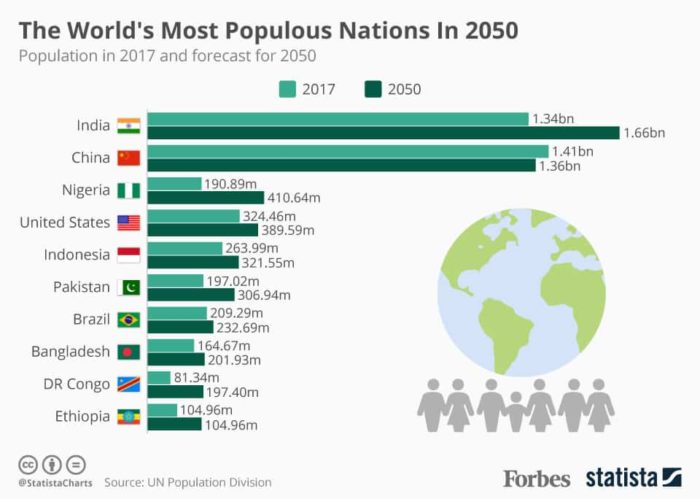Pakistan’s Population to Cross 306 Million By 2050: UN Report
Posted by HAAMIZ AHMED
The world population continues to rise. Average number of births is declining however the number of deaths is also going down leading to a steadily increasing population.
According to “United Nations’ World Population Prospects (2017 revision)”, in mid 2017 the world’s population stood at 7.6 billion.
And it will grow to 9.8 billion by 2050, the report estimates. Not to wonder, Pakistan’s population by the time will hit 306 million mark, that’s some 33% more individuals than we have right now.
We’ve added 1 billion more people to the world over the last 12 years. 60% of the population lives in Asia 17% in Africa, 10% in Europe, 9% in Latin America and the Caribbean while the remaining 6% is from North America and Oceania.
Continuous Rise in Population
The report mentions that,
Today, the world’s population continues to grow, albeit more slowly than in the recent past.
Ten years ago, the global population was growing by 1.24 per cent per year. Today, it is growing by 1.10 per cent per year, yielding an additional 83 million people annually.
By 2050 the world will be home to approximately 9.8 billion people, rising to 11.2 billion in the year 2100.
Trends Expected in 2050
India and China are still the two most populous countries and will continue to be so until 2050. India, however, will overtake China to become the most highly populated country in the world by the time.

Pakistan is currently the 5th most populated country in the world. Nigeria will overtake Pakistan, Indonesia and US to become the third most populous nation by 2050.
Collectively the 10 countries in the image above will account for half of the world’s population by the year 2050.
Unsurprisingly, Europe will be the only region to experience a decrease in numbers. The population in Europe will decline from 2017 to 2050.
Africa to Play a Central Role
The biggest contributor to the world’s population by 2050 will be Africa. The report states that the large number of children and youth in Africa will reach adulthood in the coming years.
Because of their large numbers, their childbearing will contribute to a further increase in population even assuming that they will bear fewer children on average than their parents’ generation.
In all plausible scenarios of future trends, Africa will play a central role in shaping the size and distribution of the world’s population over the next few decades.
Overpopulation
Having a larger population will also bring other problems in Pakistan. Pollution is one of the side effects we’re witnessing these days, the smog in Lahore being a recent example. Global warming is also speeding up due to this which has resulted in the recent heatwave with temperatures breaking previous records.
The risk is very real and the government needs to deal with the issue in a timely manner before the situation gets worse.
You can read the full report here.
Via Forbes
Infographic: Statista
The post Pakistan’s Population to Cross 306 Million By 2050: UN Report appeared first on .



